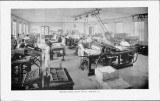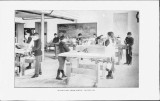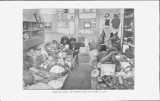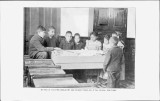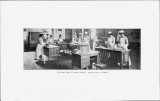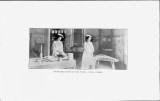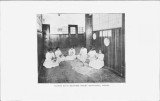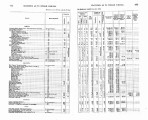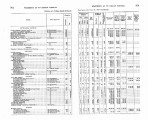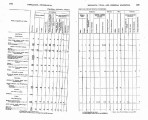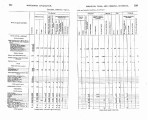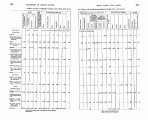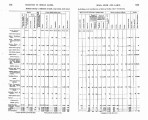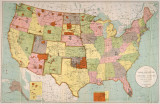| OCR Text |
Show 380 XEPOBT OR TEE BUPEBMTENDENT OF INDeN 80HOOLB. through them the pupils have acquired a broader knowledge of agri-culture, ahili to Ian and suwemfull carry out work, and a read +% command of t e 2'ng liah language. d e b oys prepare the soil, and: assisted by the girls, plant, care for, and weed the ydens, bringin3 the matured producta to the kitchen, where the ir s cook them an repare them for the table. The very small chi1 f ren plant tiny gar- !ens, and the lettuce, radishes, etc., which the raise are welcome additions to their kindergarten luncheon table. some schools there is a, rdeu for each table in the dining ball, conducted and tended by the gildren having seats at that particular table. In many instancesthe clam-room teachers with the assistance of their pu ils, have flourishing gardens, a few chidren working at a time, and an % as a reward of merit. At many of the schools the pupils have a variety of vegetables to take home, and those living near enough return to theschool from time to time durin vacat6n to get vege-tables. Some of the schools are like comfortab f e homes, in connect~on dining room with small fruits and have a exercise in the open air has developed Lessons in cooking the garden pmducta ties in the girls, and the a cultural advantage to the bovs. teacbini' g-ardening." and the educative value of flowers is ;eeognized rw an important factor in the trair~ing. Children are taught the value of working ~ ~ along practical and srientllic lines and to becor~~pero ducers as well as consumers. NATIVE INDU8TBlE8. The principal means b which the North American Indian acquired his livelihood in the ear1 y days, before the white man came to these shores, were naturally those of the chase, and, as far as was neceasa for his maintenance, such agricnltural workss provided him with foo? The Indian developed out of the materials in his localit1 t hose a r k which supplied his needs. He made blankets, and made t em so well that in their symbolic tales of Indian history, traditions, apd tribal life they could not be equaled by an3 book which needed a pnntiig press. In basketry the Indian practical g stands alone. Other nations make baskets, but they do not compare with Indian basketry. The British Museum, which contains the greatest collection of the best products of, human effort in the world, has searched the earth for the finest samples of basketry, and all co~oi s seur sa gree that the baskets made by the North American Indians are by far the very best there. The bead work of the Indian can not be equaled, and while the fanc for articles of bead work ma be but a passing one, rather than let t le art be lost it has been thoug& well to teach it to the children in the schools, mak-ing the work educative, and having the beads and colors take the place of kindergarten material. The Indian bas shown himself especially adept in tanning and curlngleather by methods of his own. In pottery |









































































































































